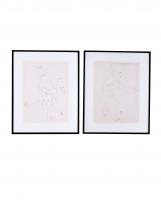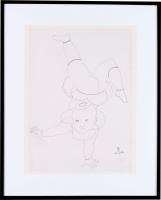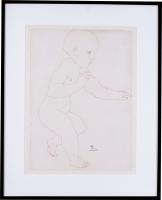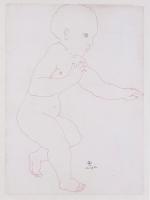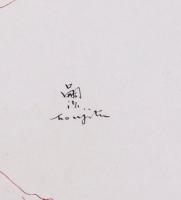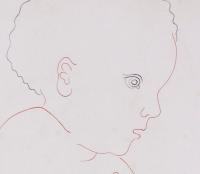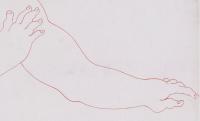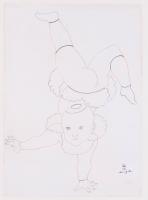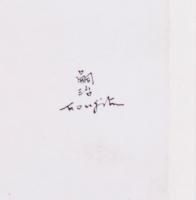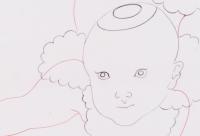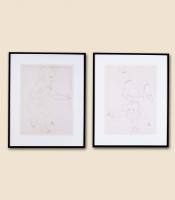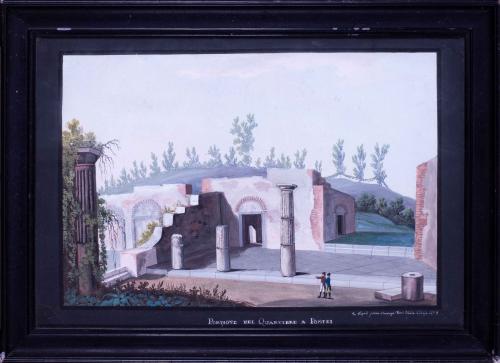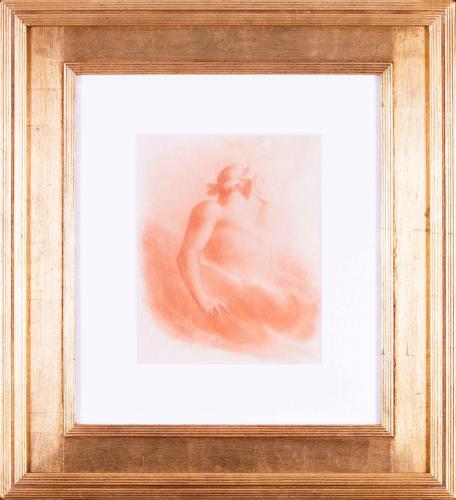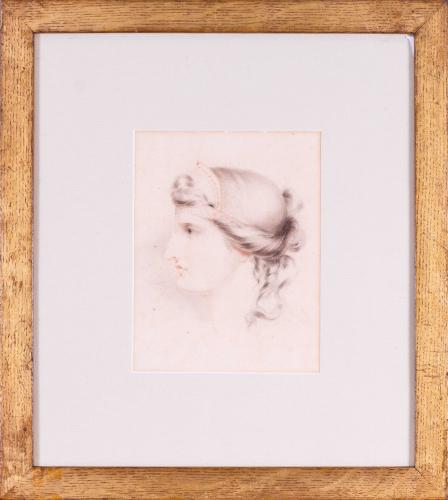
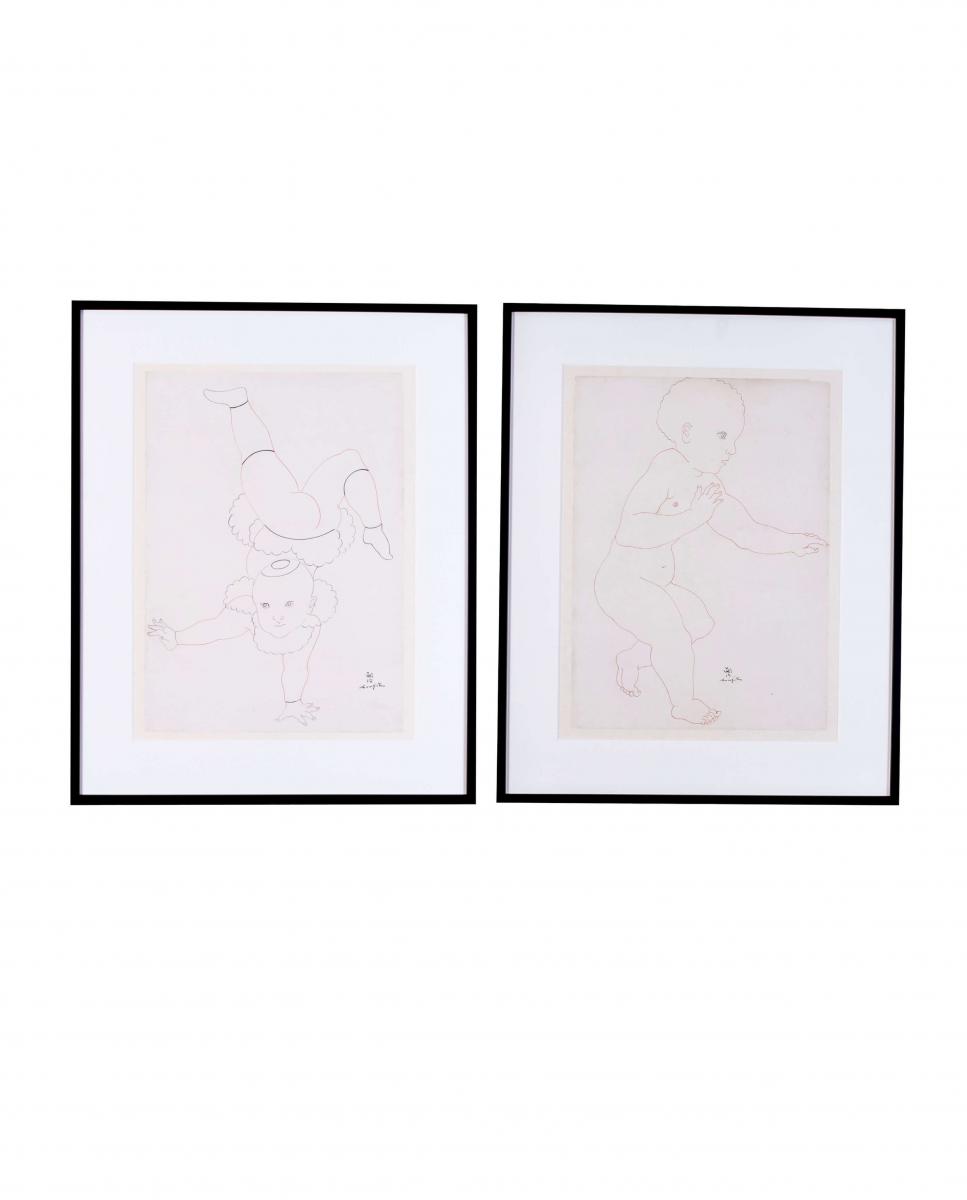
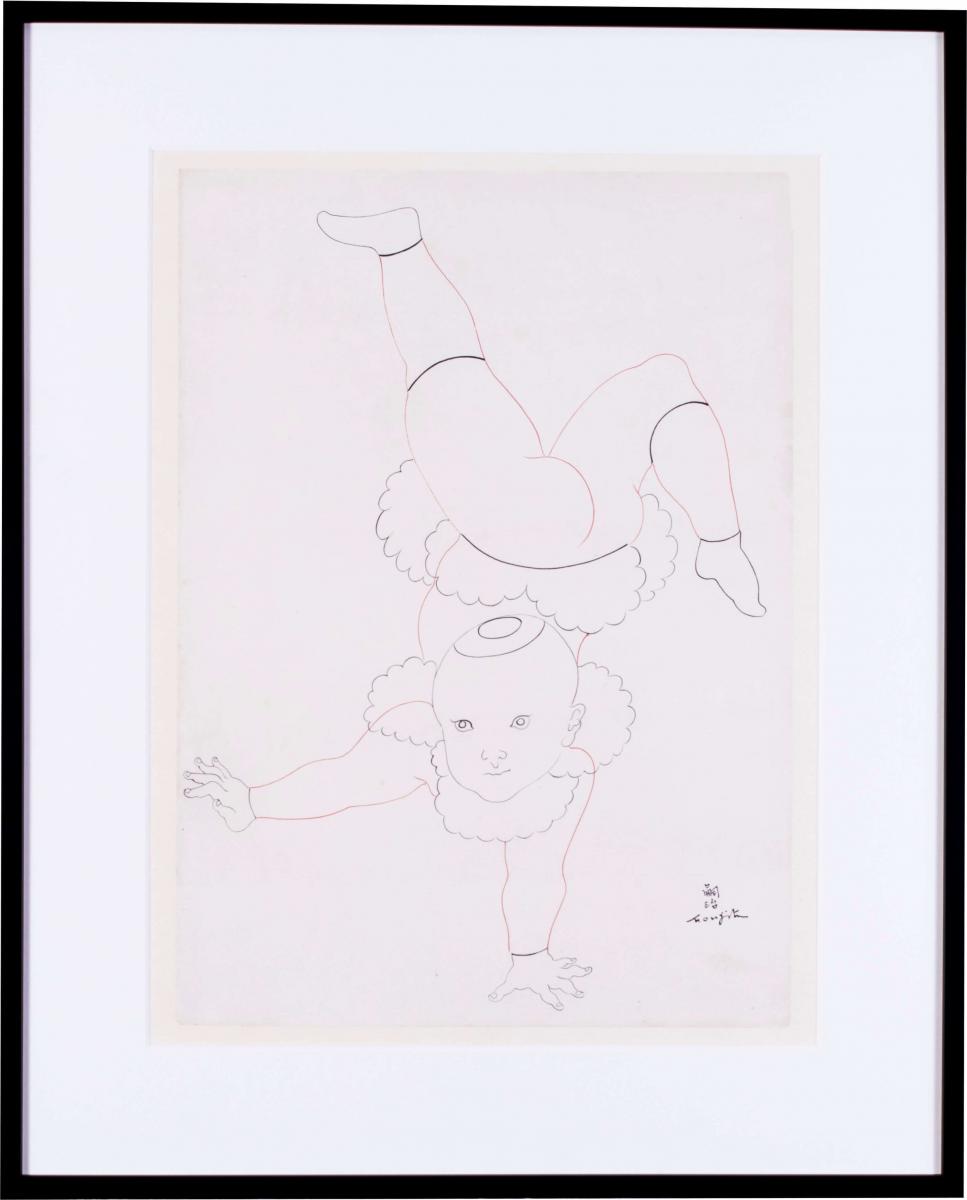
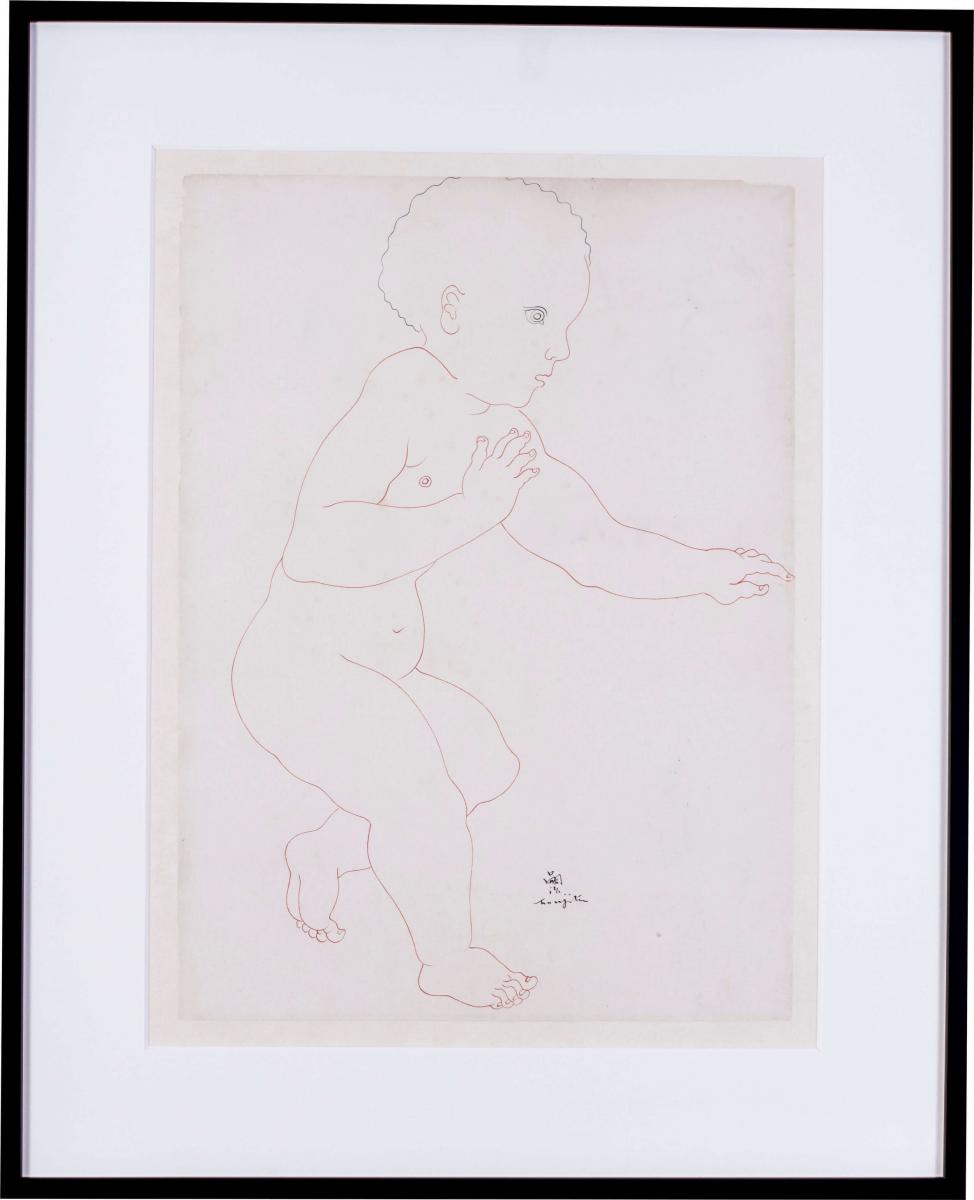
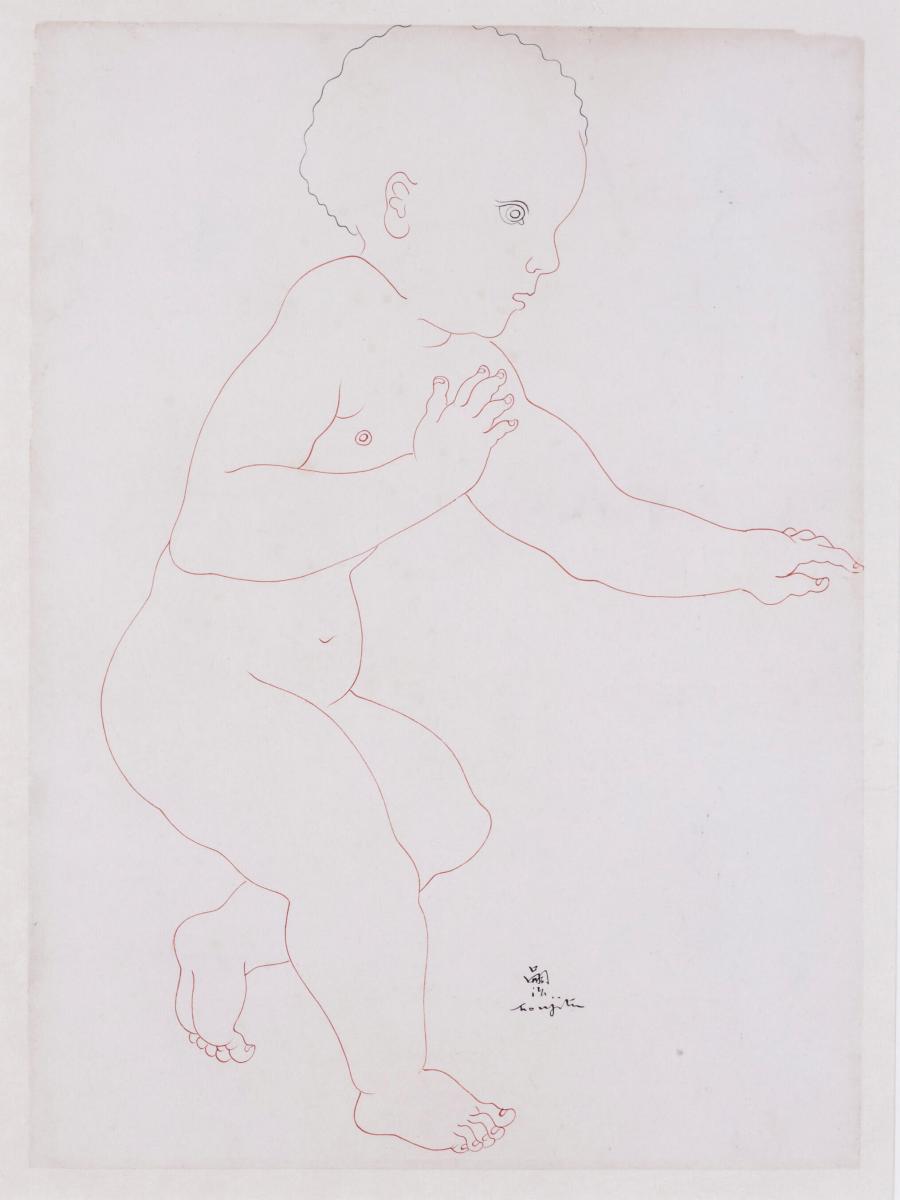
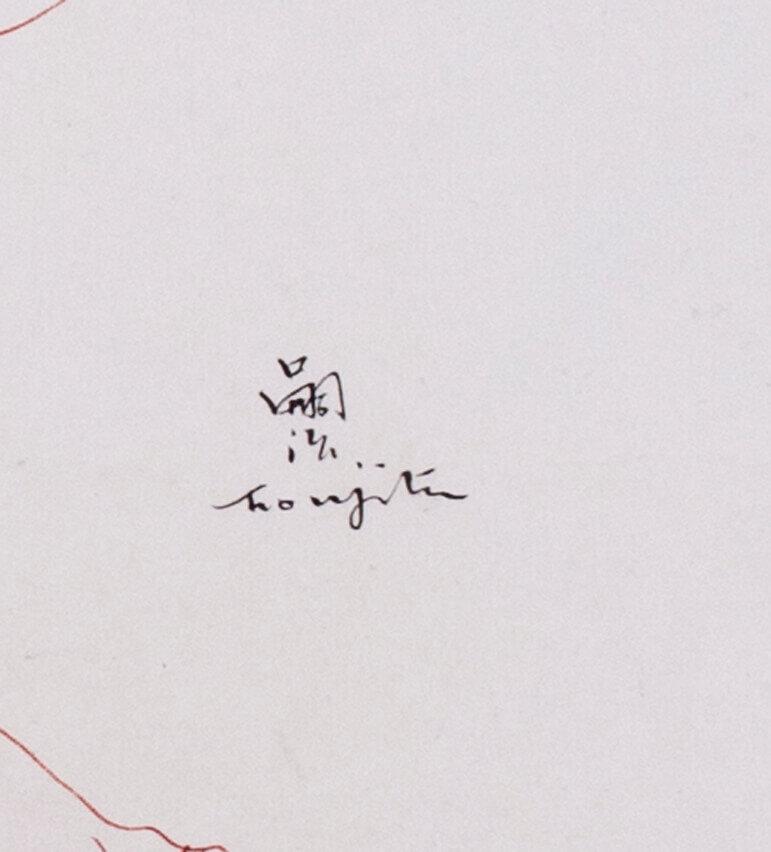
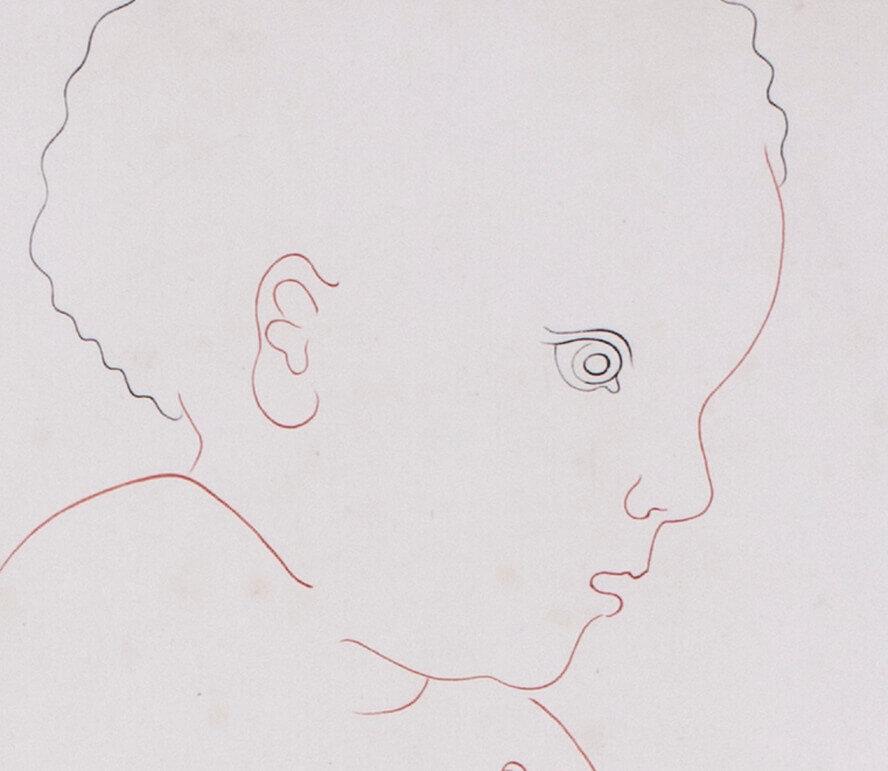
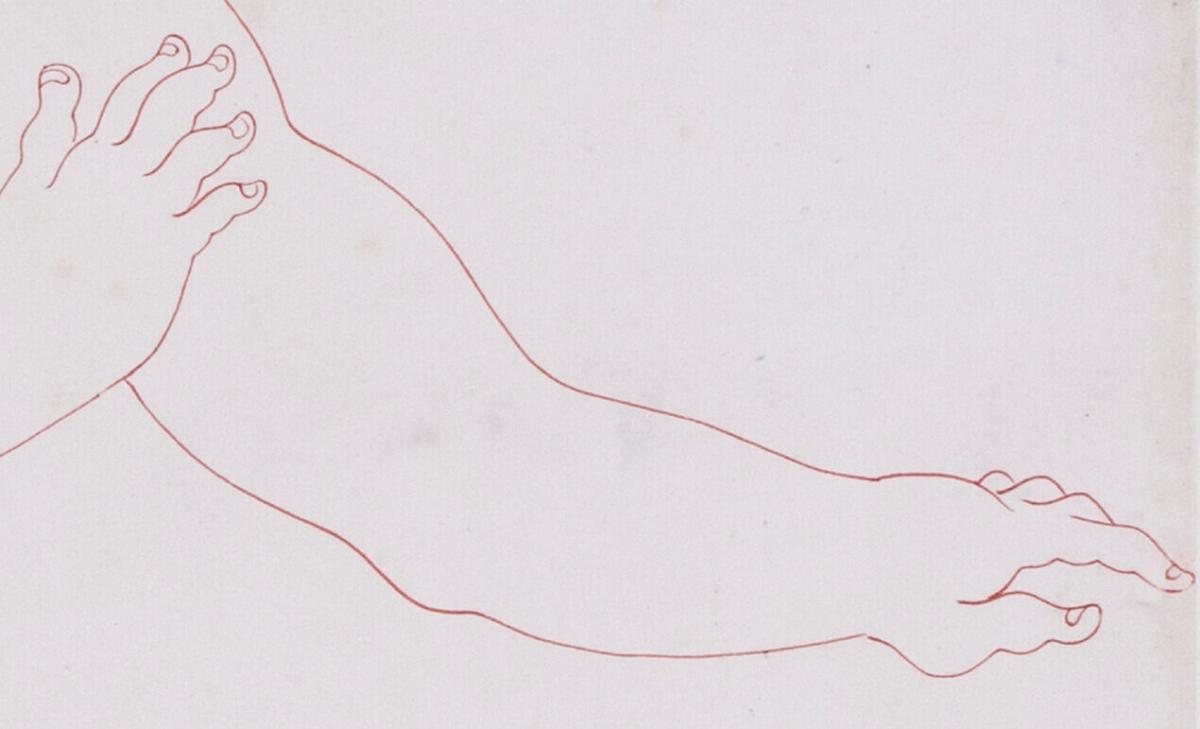
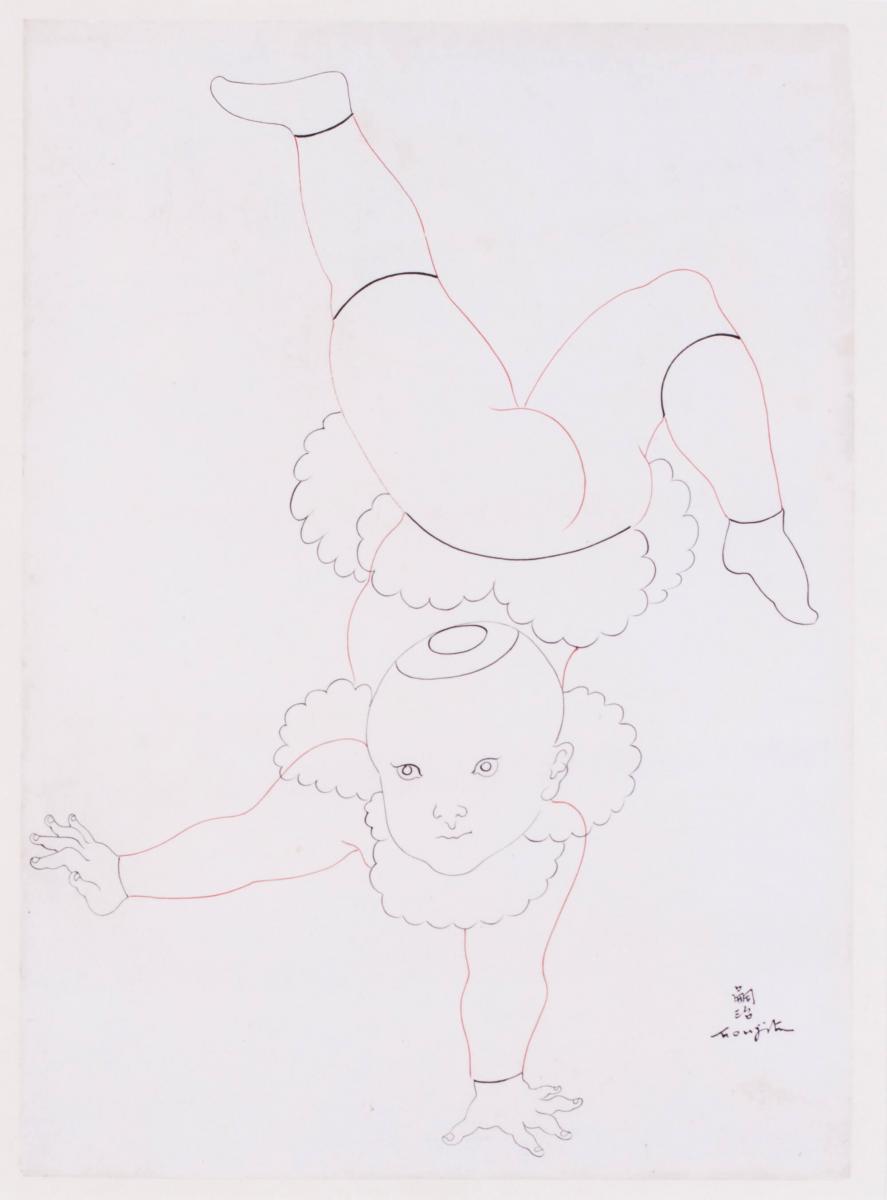
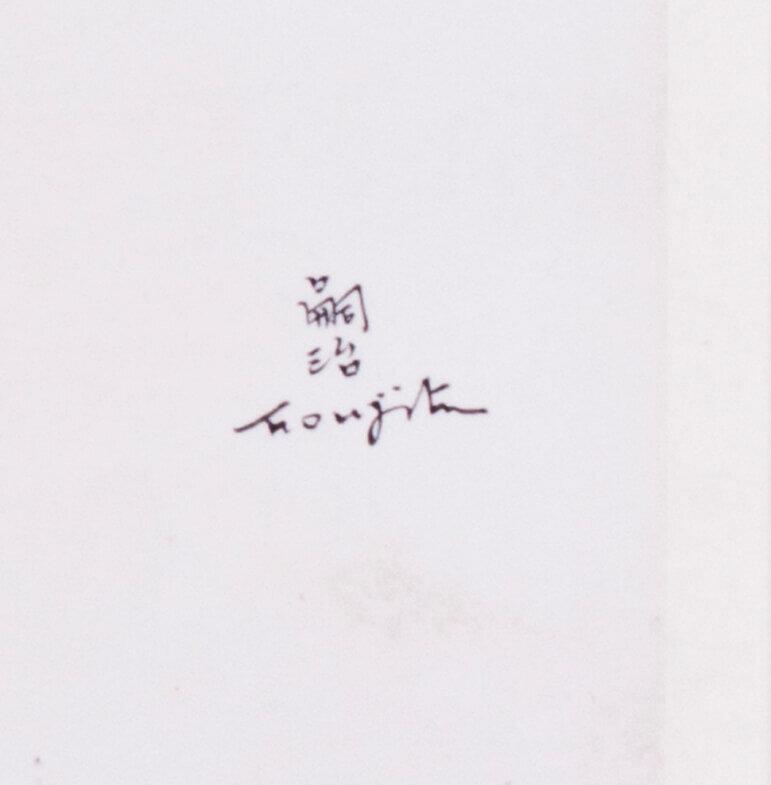
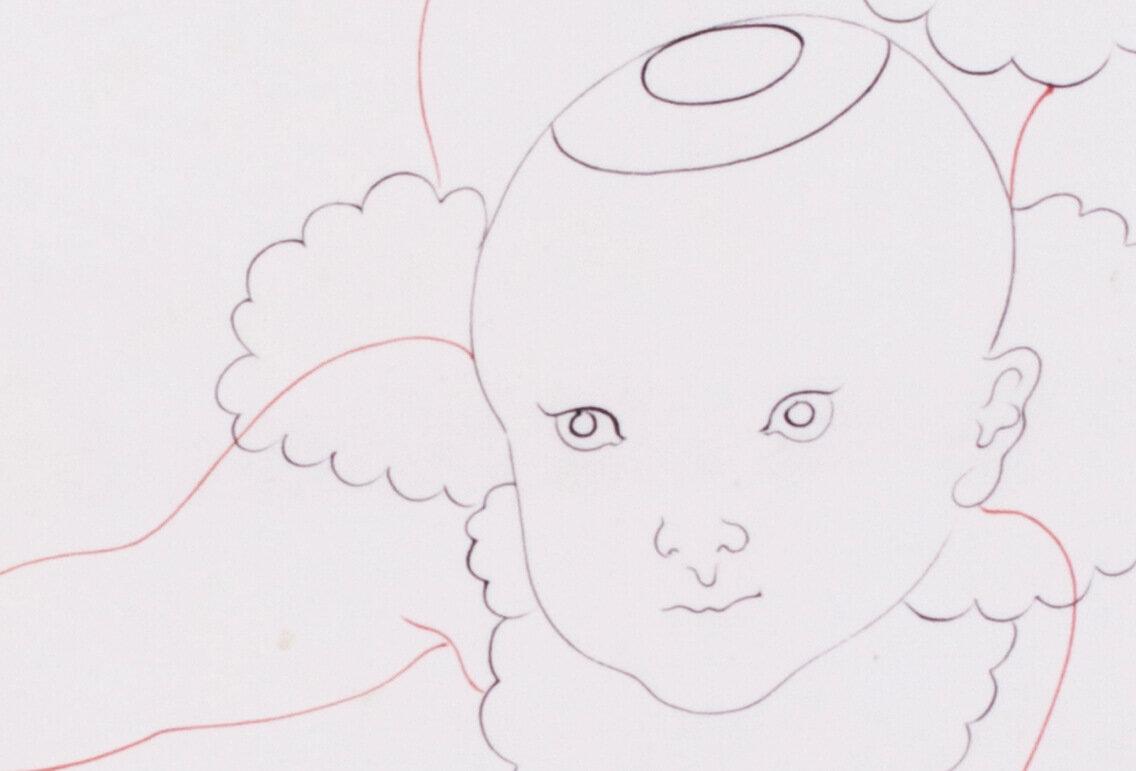
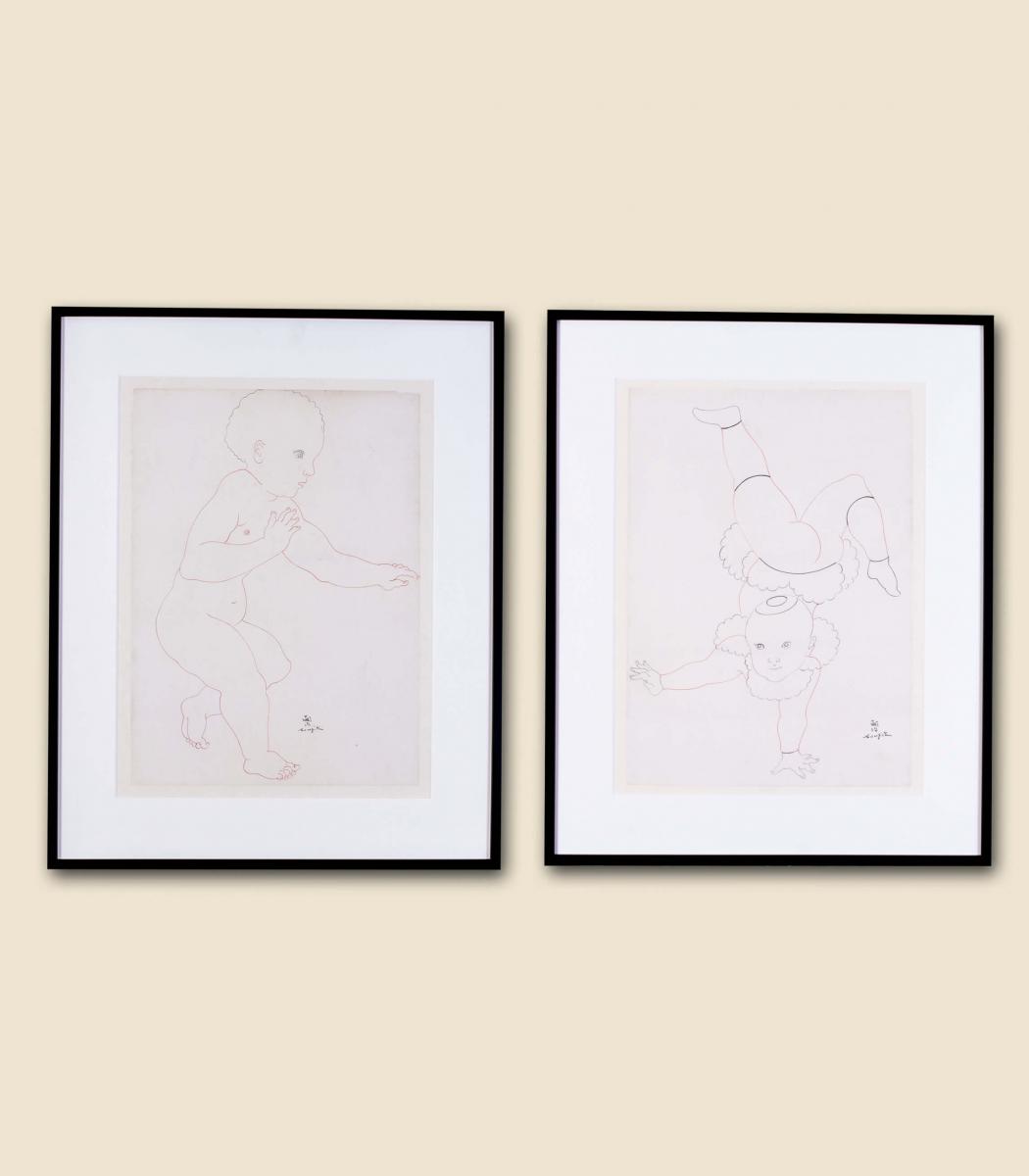
Price
£25000.00This object is eligible for a Certificate of BADA Provenance
The BADA Standard
- Since 1918, BADA has been the leading association for the antiques and fine art trade
- Members are elected for their knowledge, integrity and quality of stock
- Our clients are protected by BADA’s code of conduct
- Our dealers’ membership is reviewed and renewed annually
- Bada.org is a non-profit site: clients deal directly with members and they pay no hidden fees
(Léonard) Tsuguharu FOUJITA (Japanese, 1886-1968)
Baby Acrobat, and Baby Walking
both signed `Foujita’ (lower right), and both signed in Japanese
red and black ink on paper
20 x 15 in. (50.8 x 36.8 cm.) a pair
Provenance: The Estate of Tatsuo Kameda, Toronto.
Artist Tsuguharu Foujita, also sometimes referred to as Léonard Tsuguharu Foujita, was born in Tokyo, Japan, in 1886. Three years after graduating from the Tokyo University of the Arts in 1910, Foujita travelled to Paris, France, where he became acquainted with a number of the leading artists of the time, including Henri Matisse, Amedeo Modigliani and Pablo Picasso.
He began exhibiting in Paris in 1917, and the inclusion of his work Nu couché à la toile de Jouy (Reclining Nude with Toile de Jouy) in the 1922 Salon d’Automne was a major success, translating to an incredibly prosperous period in Foujita’s career. Last year, celebrations marking the anniversary of his death, organised in Paris, Reims, Tokyo, Osaka and Kyoto, hoped to bring him back from obscurity.
Foujita was one of the most successful artists of the 1920s, worshipped by the critics and art lovers who paid a fortune for his drawings, watercolours and oil paintings. As Paris’s shining art star, he was more successful than Picasso and more acclaimed than Matisse.
Last year he was the subject of a major exhibition at the Maillol Museum which focused on the artist’s most prolific period, between 1913 and 1931. These particular works are indicative of Foujita’s ability to deftly blend Eastern and Western styles; The line and execution harken to traditional Japanese art making.
After the outbreak of World War II, Foujita returned to Japan and was engaged as an artist for the Japanese government, a position that drew reproach from his artist friends and peers in Japan. The artistic community of Japan at the time was made up largely of pacifists, and they saw his work as an aide for warmongering by the government.
His reputation in his home country never recovered, and after travelling to the United States in 1949, he ultimately relocated permanently back to France in 1950. Back in France, his career flourished, and he was made French citizen in 1955, and awarded the Legion of Honour in 1957.
In 1959, Foujita converted to Roman Catholicism, and was baptized as Léonard. Following his conversion the subject matter of his work became distinctly religious themed, and he undertook a number of religious commissions—chief among these being the Chapel of Our Lady Queen of Peace (also known as the Foujita Chapel) in Reims, France, in 1966.
He died in 1968, and was ultimately interred at the Foujita Chapel. Today, his works can be found in numerous premier museum collections, including the Metropolitan Museum of Art, New York; the National Gallery of Art, Washington, DC; the Musée d’Art Moderne de la Ville de Paris; and the National Museum of Modern Art, Kyoto.
Dimensions
20 x 15 in. (50.8 x 36.8 cm.) a pairThe BADA Standard
- Since 1918, BADA has been the leading association for the antiques and fine art trade
- Members are elected for their knowledge, integrity and quality of stock
- Our clients are protected by BADA’s code of conduct
- Our dealers’ membership is reviewed and renewed annually
- Bada.org is a non-profit site: clients deal directly with members and they pay no hidden fees


